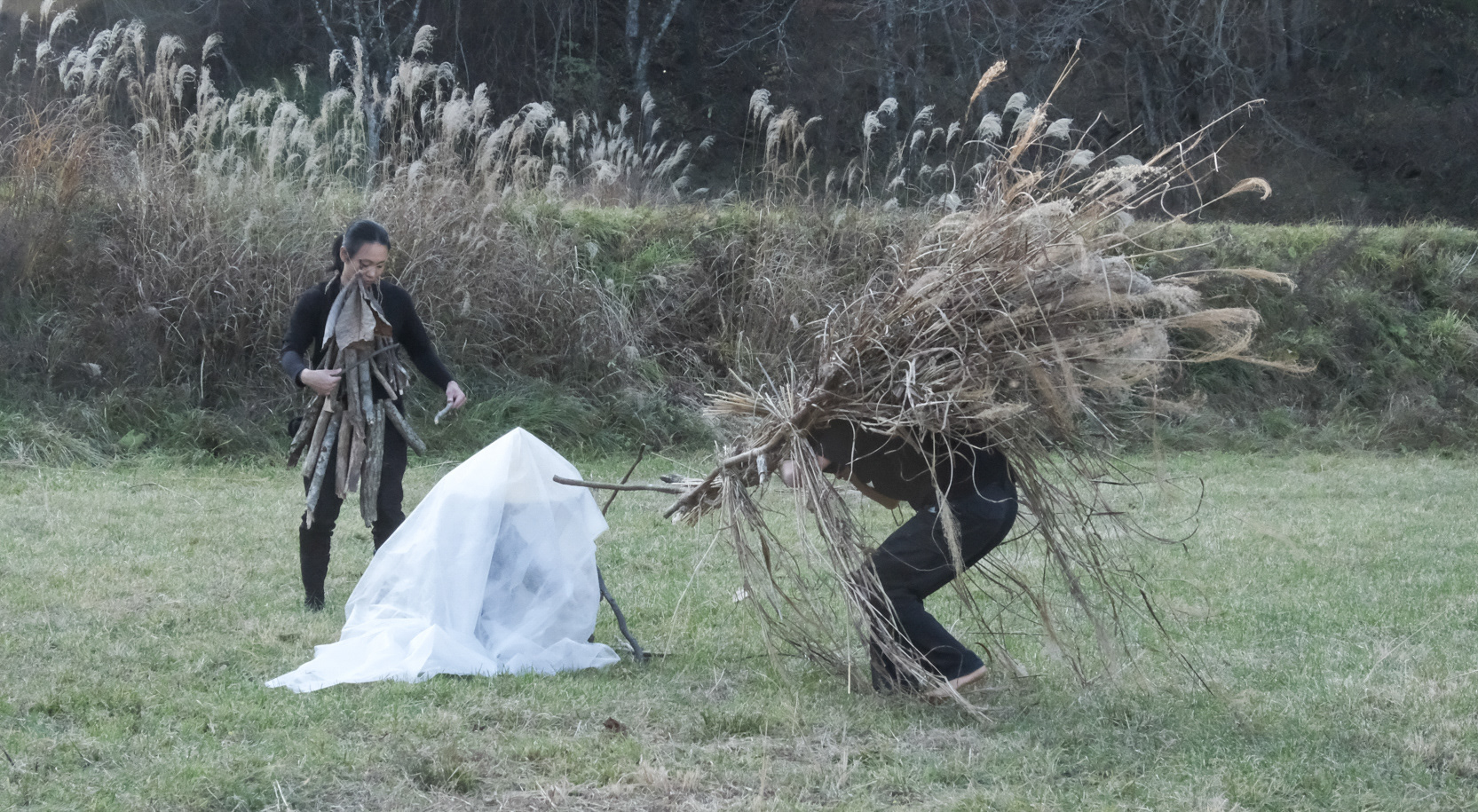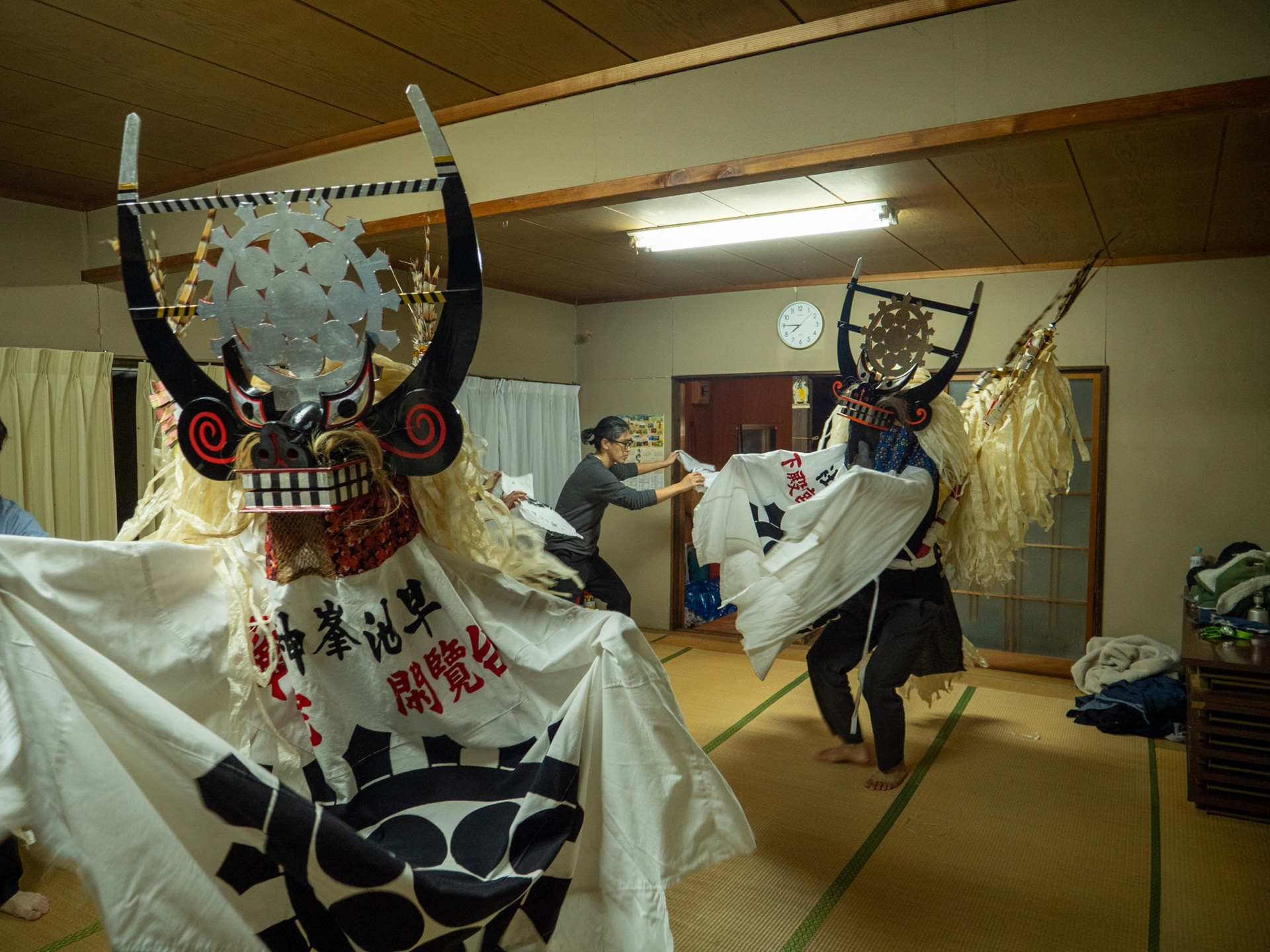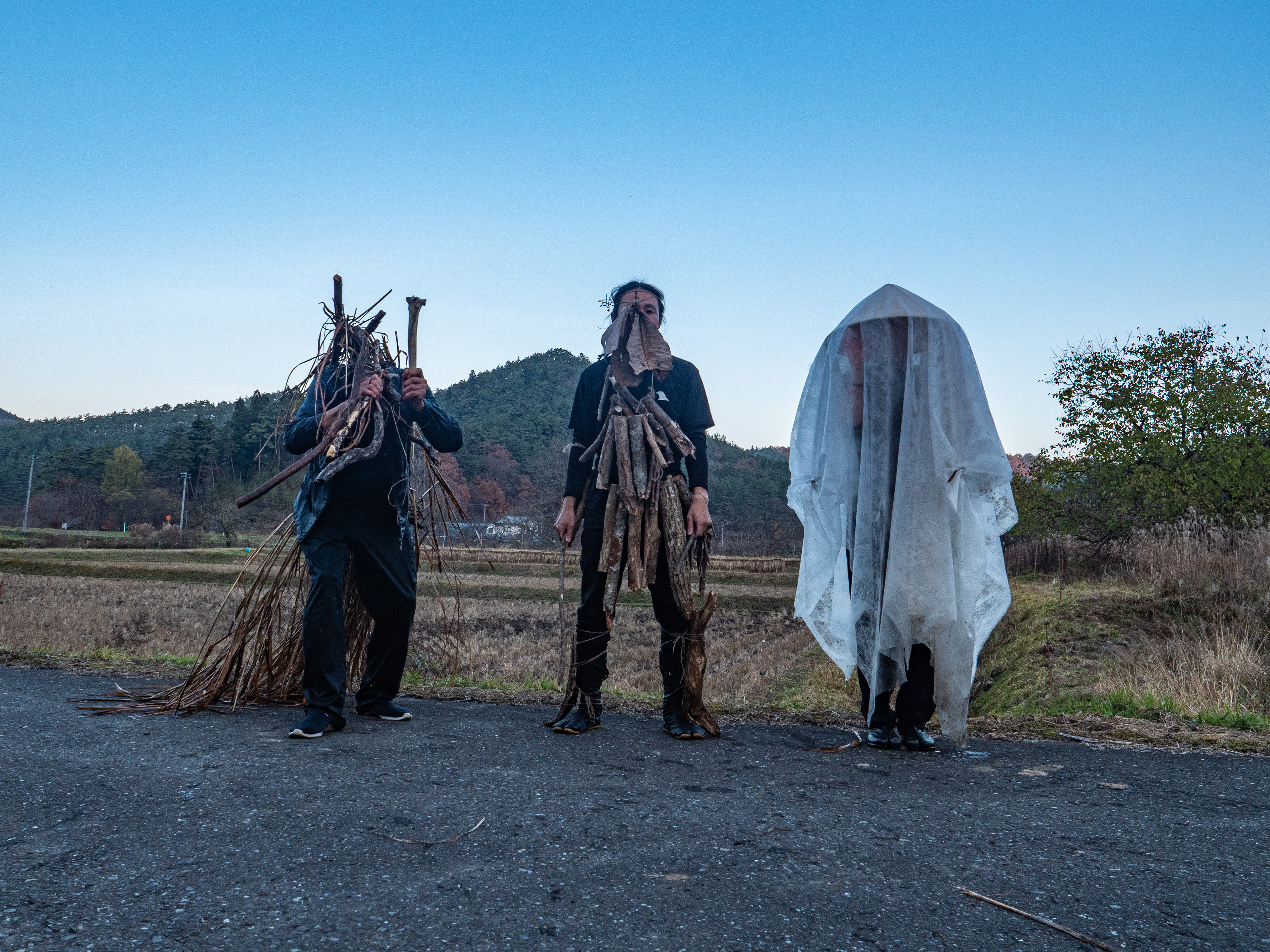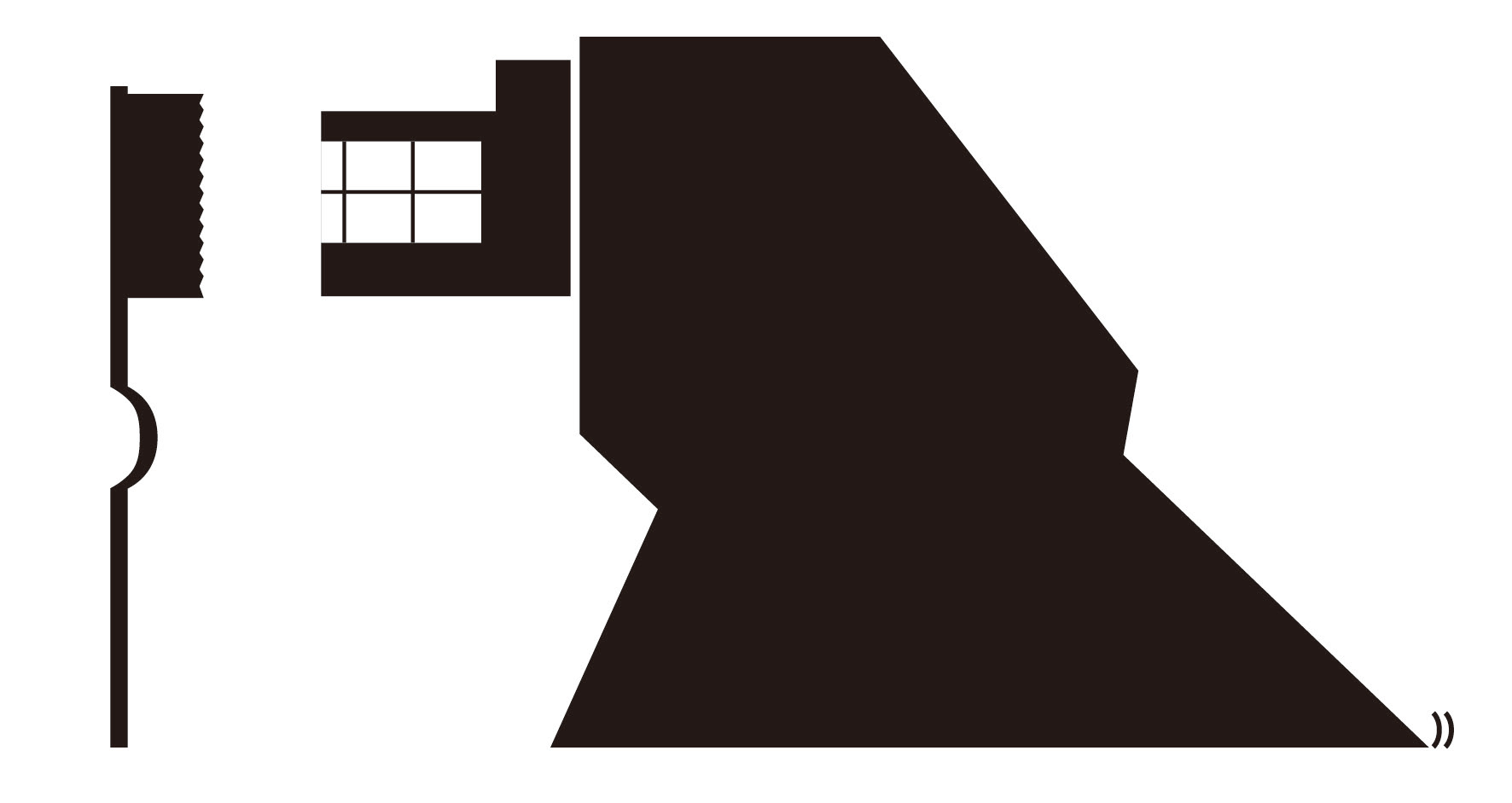岩手県遠野市
Tono City, Iwate Prefecture
Tono City, Iwate Prefecture
遠野には既存の郷土芸能としてしし踊りや、神楽の権現舞が存在する。すでに獅子舞に近い芸能が存在する土地において、新しく創作する獅子舞はどのようであるべきか?既存の獅子舞の盲点を提示する新しい獅子舞を制作すると共に、その新しい獅子舞が土地を見抜くということが大事だと思う。
元々、農耕社会に突入する前、縄文時代は特に鹿は害獣ではなく感謝すべき食料であったはずだ。つまり、オフェンス的な考え方で、積極的にそれを狩っていたわけだ。しかし、遠野では農耕社会に突入してから、鹿は害獣として駆除の対象に切り替わった。つまりデフェンスの考え方で、田畑を守るために消極的にそれを狩り始めたのだ。今や鹿などを供養する鳥獣慰霊碑は、田畑の豊穣のために食べもせずただ殺されて埋められた鹿を供養する形式的なシンボルとなっている。
変化の著しい狩猟の考え方が取り込まれてきた「しし踊り」という芸能は、剣舞やら神楽などにも影響を受けて、舞い方の由来をトレースすることが難しくなりつつある。つまり、狩猟だけでなく芸能も型が残るのみで、形式的に伝統として脈々と受け継がれているというわけだ。
そのような中で、私たちが今回創作した獅子舞は、滞在中に幾度となく出会った鹿の視点を借りようと考えた。
そのような中で、私たちが今回創作した獅子舞は、滞在中に幾度となく出会った鹿の視点を借りようと考えた。
つまり、遠野での獅子舞生息可能性とは、鹿の生息可能性のことだと思ったわけだ。鹿という野生がどこまで遠野の土地を占拠しうるだろうか?どこまで縄文の残り香は残っているのか?そのようなことを考えながら、鹿の生息領域を展開する獅子舞を制作したのだ。
メンバーの稲村は宮沢賢治の著作「鹿踊りのはじまり」に描かれているススキが、鹿の登場の描写に登場するのに加えて印象的な素材であったことから、これを使用して獅子舞を創作した。工藤は鹿と対峙する人間を白い幕と笠を使って表現し、船山は木の枝や葉っぱを身にまとい山の神のような「木琴マン」として音を奏でた。演舞は僕が鹿の骨を突き立てるまでを一連の流れとして、鹿を葬儀するという内容の演舞を各所で行った。
この獅子舞を創作して実際に小友町のエリア3箇所で実験的に舞うことができた。今回の獅子舞の構成は五城目編の時と似ているものの、あの時のように練り歩きはしなかった。渋谷編の時と同様に一時的に場所を占拠して舞う形となったのだ。また、その動きには鹿の動作を取り入れるなど、新しい試みもできた。今回は一回の滞在として完結させず、遠野市の他のエリアでの舞いは次回への課題として残す形となった。今後、遠野の獅子舞生息可能性をじっくりと考えていきたい。
(2023年11月7日~12日)
Tono has existing local performing arts such as Shishi Odori and Kagura Gongenmai. In a land where performing arts similar to lion dance already exist, how should a new lion dance be created? I think it is important to create a new lion dance that presents the blind spots of the existing lion dance, and that the new lion dance sees through the land.Originally, in the Jomon period, before we entered an agricultural society, deer should have been a food we should be grateful for, not a pest. In other words, he was actively hunting it with an offensive mindset. However, after the transition to an agricultural society in Tono, deer became the object of extermination as pests. In other words, with a defensive mindset, they started passively hunting it to protect the fields. Today, the memorial monuments for animals such as deer have become a formal symbol of memorial services for deer that were simply killed and buried without eating for the sake of good harvests in the fields.
Shishi Odori, a performing art that incorporates the rapidly changing concept of hunting, has been influenced by sword dances and kagura dances, and it is becoming difficult to trace the origins of dance styles. In other words, not only the hunting but also the performing arts, only the patterns remain, and they have been handed down from generation to generation as formal traditions. Under such circumstances, we decided to borrow the point of view of the deer that we encountered many times during our stay in the lion dance that we created this time. In other words, I thought that the possibility of lion dance inhabitation in Tono meant the possibility of inhabitation of deer. How far can wild deer occupy the land of Tono? How much Jomon incense remains? With that in mind, I created a lion dance that unfolds the habitat of deer.
Member Inamura used pampas grass, which is depicted in Kenji Miyazawa's book "The Beginning of Shishi Odori", as well as being an impressive material in addition to appearing in the depiction of the appearance of the deer, so he used it for the lion dance. created. Kudo used white curtains and hats to depict humans confronting deer, while Funayama dressed himself in tree branches and leaves and played music as a ``xylophone man'' like a mountain god. The dance was a series of events until I stabbed the bones of the deer, and we performed dances in various places to perform the deer's funeral.I was able to create this lion dance and actually perform it experimentally in three areas in Otomo Town. Although the structure of the lion dance this time is similar to that of Gojome, it was not paraded like that time. Just like in the Shibuya edition, they temporarily occupied a place and danced. In addition, we were able to try new things, such as incorporating the movement of a deer into the movement. This time, we did not complete it as a one-time stay, and decided to leave dances in other areas of Tono City as a subject for the next time. In the future, I would like to carefully consider the possibility of shishimai living in Tono.
(November 7-12, 2023)
(November 7-12, 2023)

















